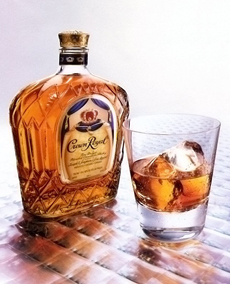

Some people like their whiskey on the rocks, but we think that drinking it neat keeps the flavors and aromas cleaner.
|
THALIA DEMAKES is a freelance writer.
|
|
March 2006
Updated November 2009
|
 |
Product Reviews / Main Nibbles / Cocktails & Spirits
Whiskey 101
Page 4: Tasting Whiskey: The Role
Of The Senses
This is Page 4 of a seven-page article. Click the black links below to view the other pages.
Tasting Whiskey: The Role Of The Senses
- Smell: As an organ, the nose is far more acute an organ than the tongue. There are actually 32 primary smells and only four primary tastes. So it makes sense that whiskey tasting relies primarily on the sense of smell, though the two work together to gather information on each sample. The smells, called aromatic volatiles, are detected by a small fleshly bulb called the olfactory epithelium, which is located at the back of the nose. The nose detects the scents (nuances of flavor from the volatile aromatics) and passes the information it reads directly to the brain. With a bit of practice, you can learn pretty quickly to break down smells and identify their constituent parts. Learning to put names to these parts is another story altogether.
- Taste: The primary tastes are registered by tiny sensory receptors on our tongues and palates. These are broadly arranged so that sweet flavors are picked up on the tip of the tongue, sour and salty flavors on the sides, and bitter flavors towards the back. The amount of time it takes to stimulate the various areas of the tongue varies, with the bitter receptor taking the longest amount of time. So it is important when tasting whiskey to hold the liquid in the mouth to make sure it coats all areas of the tongue thoroughly in order to get an accurate reading. While it is obvious that the tongue registers the primary tastes present in whiskey, you may not realize the tongue also detects what is called the “mouthfeel” as well.
- Sensation: The mouthfeel is a term used to describe the way our tongues read the viscosity, texture and smoothness of the liquid being swallowed, as well as the pungency (basically the evaluation of pain) which can range from mere irritation to unbearable intolerance. Along with mouthfeel, there is also a sensation experienced by the nose. In tasting whiskey, pungency is particularly apparent in the stronger spirit, and may sting the nose and tongue and bring forth numbness, similar to temporary anesthesia. This sensation in the nose is called the “nose prick,” as it sparks sensation and tickles the hairs in the nostrils. Be cautious when nosing whiskey at full strength (from the cask), as it can be very potent and may really burn!
- Overall Flavor: The flavor of the whiskey is actually determined by three factors: smell, taste, and feeling. We all know how bland things taste when we are burdened with a cold, which says a lot about the importance of smell in the ability to taste. Smells trigger memories more effectively than sights or sounds, and they enhance taste and sensation. Without the combined force of smell, taste and sensation (mouthfeel and nose prick), we would be missing an essential element in evaluating whiskey.
Go To Page 5: Tasting Whiskey: Plan A Whiskey Tasting
Go To The Article Index Above
© Copyright 2005-
Lifestyle Direct, Inc. All rights reserved. Images are the copyright of their respective owners.

|




